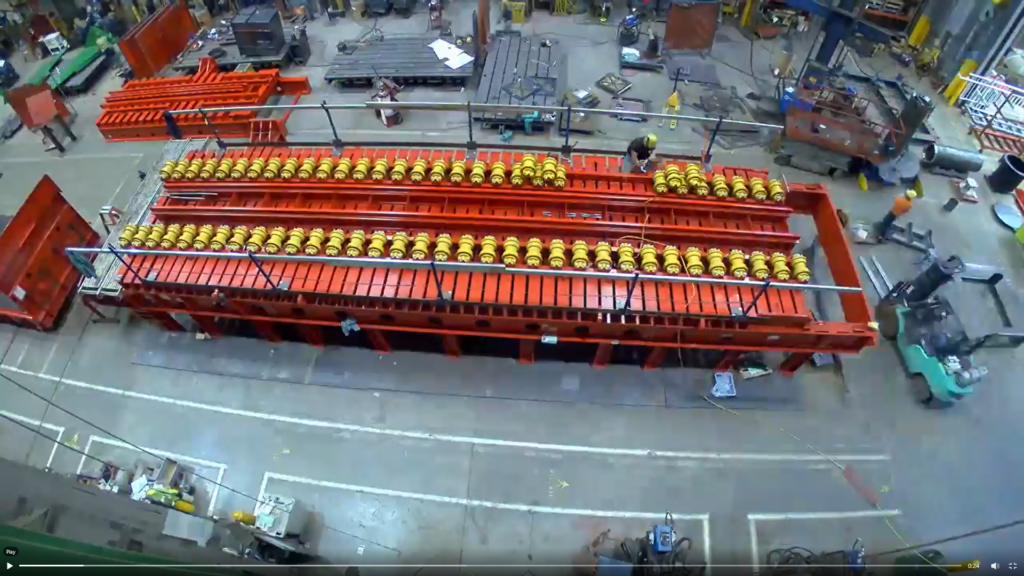McLanahan has completed the build of its largest apron feeder to date. The apron feeder, which will be used for metering phosphate ore from rail cars to a conveyor, measures approximately 18.2 m long, 7.3 m wide, and 4.9 m tall overall and weighs about 288,031 kg.
“The sheer size of the equipment made it more involved than a more standard size machine,” explained David Imler, Global Product Engineering Specialist. “It took a lot of collaboration with our customer to make sure they were getting what they wanted and expected. It also required a lot of collaboration with our suppliers as well to provide a reliable design. Internally, it took the efforts of a lot of people to pull it all together.”
The apron feeder was split into three main sections for shipping and installation purposes, so special attention was necessary during fabrication and assembly to ensure everything would be aligned and positioned properly.
An apron feeder of this size typically features a dual drive, but due to space constraints at the customer’s location, McLanahan designed the apron feeder with a single, self-supporting, main conveyor drive. This reduces the space required for the feeder as well as the space required for maintenance activities.
The customer also required an adjustable strike-off gate, a component that is typically stationary. The strike-off gate meters the flow of material to the discharge by providing a consistent bed depth; therefore, the height of the strike-off gate affects the capacity of the machine.
With standard apron feeder designs featuring a stationary strike-off gate, the capacity of the machine is controlled by speeding up or slowing down the chain speed. Because of the adjustable strike-off gate on this apron feeder, the customer will have two different methods for controlling the capacity.
“This particular customer wanted an adjustable strike-off so they have more control of the material flow out of the apron feeder since the material characteristics can change from day to day,” Imler said. “Sometimes it can be clumpy and not flow as nicely, so with an adjustable strike-off, they can compensate for that better than by only adjusting the chain speed.”
The customer is also able to adjust the height of the strike-off gate while material is flowing through the machine. “This allows them to watch the discharge of the apron feeder and fine-tune the strike-off precisely as needed without stopping the feeder,” Imler said.
McLanahan apron feeders are the original National Iron Company (NICO) design developed for the mining industry in the 1950s. “Rugged and reliable, McLanahan Apron Feeders are available in a range of configurations to suit the specific needs of an application. Being able to design equipment to a customer’s exact needs is one of the many advantages of partnering with McLanahan.”
“We are willing to tailor our standard designs to build equipment exactly how our customers want so that they can achieve all they expect from the machine,” Imler said. “We also have a lot of experience building large, heavy-duty equipment. We’re all able to work together, from engineering to production, to build something unique and specific to each individual customer.”











